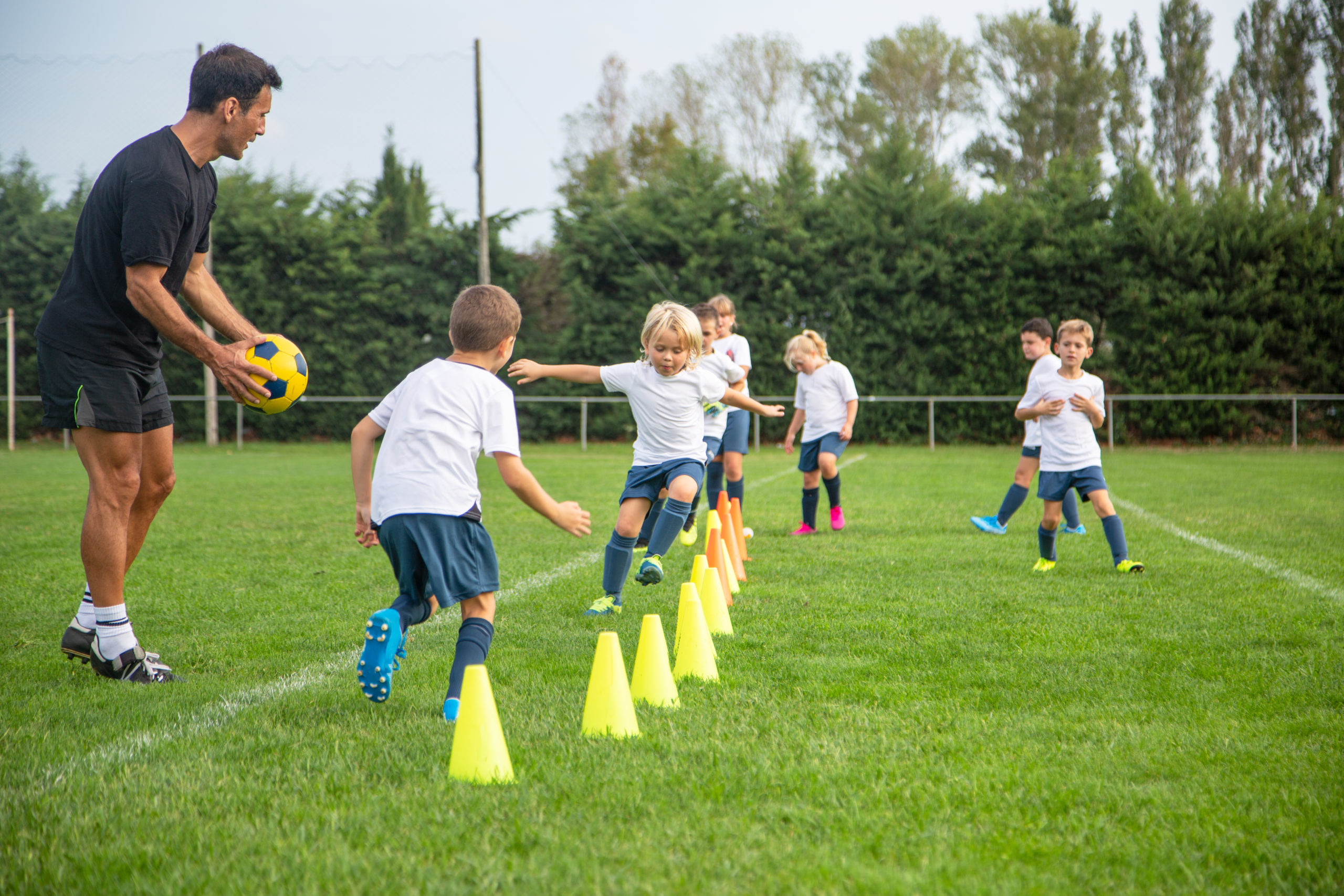Playing sports is a rite of passage for many kids, fostering teamwork, confidence, and physical fitness. As a parent, watching your child dash across a soccer field or swing a bat can fill you with pride, but it also comes with a nagging worry: What if they get hurt? According to the Centers for Disease Control and Prevention (CDC), over 2.6 million children visit emergency rooms annually for sports-related injuries. The good news? Doctors say many of these injuries are preventable with the right precautions. This guide dives deep into expert-backed strategies to keep your young athlete safe, blending practical tips, personal anecdotes, and the latest medical advice to ease your mind and keep the game fun.
Why Sports Safety Matters for Kids
Kids’ bodies are still growing, making them more vulnerable to injuries like sprains, fractures, and concussions. Half of these injuries could be avoided with proper gear, training, and supervision, according to Johns Hopkins Medicine. Ensuring safety isn’t just about avoiding a trip to the ER—it’s about helping your child enjoy sports for years to come.
The Stakes Are Higher for Growing Bodies
Children’s bones, muscles, and ligaments are still developing, which increases the risk of growth plate injuries or overuse issues. For example, my nephew, an avid Little League pitcher, once complained of elbow pain that turned out to be an overuse injury from throwing too many pitches without rest. A quick visit to a pediatric sports medicine specialist and a few weeks of rest got him back on the mound, but it was a wake-up call about the importance of age-appropriate training.
Essential Gear to Keep Kids Safe
Proper equipment is the first line of defense against sports injuries. From helmets to mouthguards, the right gear can make all the difference. Doctors emphasize that gear must fit well, be sport-specific, and meet safety standards.
Helmets: Non-Negotiable for Contact Sports
Helmets are critical for sports like football, hockey, and baseball. Ensure they’re snug, with a properly fastened chin strap, and certified by organizations like the Consumer Product Safety Commission (CPSC) for biking or the Hockey Equipment Certification Council (HECC) for hockey. A poorly fitted helmet is about as useful as a paper hat in a rainstorm.
Eye Protection: Shielding Those Peepers
Sports like basketball, racquetball, and lacrosse pose risks to kids’ eyes. Polycarbonate sports glasses or goggles can prevent serious injuries from stray balls or elbows. When my daughter started playing tennis, we invested in a pair of shatterproof sports glasses, which gave me peace of mind during her intense volleys.
Mouthguards: Saving Smiles
The American Dental Association recommends mouthguards for over a dozen sports, including soccer and martial arts. A custom-fitted mouthguard protects teeth and reduces the risk of jaw injuries. Trust me, the cost of a mouthguard is a lot less than a dental bill!
| Sport | Recommended Gear | Safety Certification |
|---|---|---|
| Football | Helmet, mouthguard, shoulder pads | NOCSAE |
| Baseball/Softball | Batting helmet, catcher’s gear, athletic cup | CPSC, HECC |
| Basketball | Mouthguard, sports glasses | ASTM |
| Soccer | Shin guards, mouthguard | FIFA-approved |
Training and Conditioning: Building a Strong Foundation
Proper training isn’t just about improving performance—it’s about injury prevention. Doctors recommend a mix of strength, flexibility, and balance exercises tailored to your child’s age and sport.
Warm-Ups and Stretching: The Unsung Heroes
A good warm-up increases blood flow to muscles, reducing the risk of strains. The FIFA 11 Soccer Injury Prevention Program, for instance, includes dynamic stretches and agility drills that can cut ACL injuries by up to 52%. Encourage your child to spend 5–10 minutes warming up with light jogging or jumping jacks before diving into practice.
Strength Training: Age-Appropriate and Safe
For kids, strength training should focus on bodyweight exercises like push-ups or squats rather than heavy weights. A pediatrician I spoke with during my son’s soccer season emphasized that kids under 15 should avoid lifting heavy to protect their growth plates. Programs like the Hip Myrtl Routine can strengthen hips and core, lowering injury risk by 39%.
Avoiding Overuse: The Power of Rest
Overuse injuries, like stress fractures or tendonitis, are common when kids play one sport year-round. Doctors advise varying sports to give specific muscle groups a break. My friend’s son, a dedicated swimmer, developed shoulder pain from repetitive strokes. Switching to basketball for a season allowed him to recover while staying active.
Playing on Safe Surfaces
The playing environment can be a game-changer for safety. Hard or uneven surfaces increase the risk of ankle sprains and knee injuries. Doctors recommend choosing fields and courts designed to absorb impact.
Checking the Field: No Holes, No Hazards
Before games, inspect fields for ruts, rocks, or debris. My daughter once tripped on a divot during a soccer match, narrowly avoiding a sprained ankle. Soft surfaces like grass or synthetic turf are safer than concrete for high-impact sports like basketball or running.
Indoor vs. Outdoor: What’s Safer?
Indoor courts, like wooden basketball floors, are often more forgiving than outdoor asphalt. If your child plays outdoors, ensure they wear appropriate shoes with good traction to prevent slips. A quick chat with their coach can confirm the surface is up to par.
Supervision and Coaching: The Adult Factor
Qualified adult supervision is non-negotiable. Coaches should be trained in first aid, CPR, and sport-specific safety protocols. They also need to foster a culture of safety over winning.
Choosing the Right Coach
Look for coaches certified by organizations like the National Federation of State High School Associations (NFHS). A good coach enforces safety rules and matches kids by skill level and size to prevent injuries. I once pulled my son from a team where the coach pushed kids to play through pain—a red flag for any parent.
Parental Involvement: Be Their Advocate
Parents play a key role in reinforcing safety. Attend practices to ensure rules are followed, and teach your child to speak up about injuries. When my nephew felt pressured to ignore a sore knee, his mom stepped in, consulted a doctor, and ensured he rested until cleared to play.
Concussion Awareness: Protecting Young Brains
Concussions are a serious concern, especially in sports like football, soccer, and wrestling. One in four concussions stems from aggressive play, says the CDC. Recognizing symptoms and acting quickly can prevent long-term issues.
Spotting the Signs
Symptoms include headaches, dizziness, confusion, or sensitivity to light. If your child takes a hit and seems “off,” don’t let them return to play until evaluated by a doctor. My friend’s daughter once seemed fine after a soccer collision but later developed headaches—a doctor’s visit confirmed a mild concussion.
Return-to-Play Protocols
Follow a gradual return-to-play protocol under medical supervision. Rushing back too soon can worsen a concussion. The CDC offers free concussion guides for parents and coaches, which I’ve found invaluable for navigating these situations.
When to Seek Medical Care
Not every bump requires a doctor, but knowing when to act is crucial. If your child can’t move an injured area, experiences swelling, or shows concussion symptoms, head to urgent care. For minor sprains, the RICE method (Rest, Ice, Compress, Elevate) works wonders.
Pre-Season Physicals: A Must-Do
A sports physical can identify risks like weak joints or heart conditions. Schedule one annually with a pediatrician or sports medicine specialist. My son’s physical caught a minor knee instability that we addressed with targeted exercises, preventing a worse injury.
Nutrition and Hydration: Fueling Safety
Proper nutrition and hydration are often overlooked but critical for injury prevention. Kids in growth spurts need extra calories and fluids to support their bodies.
Hydration: Keep the Water Flowing
Dehydration can lead to heat-related illnesses, especially in summer sports. Ensure your child has water or sports drinks during practices and games. I always pack a reusable water bottle for my daughter’s games—it’s a small step that makes a big difference.
Balanced Diet: Powering Performance
A diet rich in protein, carbs, and healthy fats supports muscle growth and recovery. During my son’s basketball season, we added more lean meats and whole grains to his meals, which helped him stay energized and avoid fatigue-related injuries.
Pros and Cons of Youth Sports
| Pros | Cons |
|---|---|
| Builds teamwork and discipline | Risk of injuries like sprains |
| Boosts physical and mental health | Potential for overuse injuries |
| Encourages lifelong fitness habits | Time and financial commitment |
People Also Ask (PAA)
What are the most common sports injuries in kids?
Sprains, strains, and growth plate injuries top the list, followed by concussions in contact sports. Proper gear and training can prevent many of these.
How can I tell if my child has a concussion?
Look for headaches, dizziness, nausea, or confusion after a hit. Seek medical attention immediately if symptoms appear.
What’s the best way to prevent overuse injuries?
Encourage kids to play multiple sports and take rest periods between seasons. This reduces repetitive stress on specific muscles.
Where can I get certified sports gear?
Retailers like Dick’s Sporting Goods or Amazon offer CPSC- or HECC-certified helmets, mouthguards, and more. Check product labels for certifications.
FAQ Section
Q: How can I ensure my child’s sports gear fits properly?
A: Have your child try on gear before buying, ensuring helmets are snug, mouthguards fit teeth comfortably, and shoes provide good support. Re-check fit every season, as kids grow fast.
Q: Should kids specialize in one sport?
A: Doctors advise against early specialization to prevent overuse injuries. Playing multiple sports builds diverse skills and reduces burnout.
Q: What are the best tools for monitoring sports injuries?
A: Apps like Sports Injury Tracker or wearable devices like Fitbit can track activity levels and alert you to overexertion. Consult a doctor for personalized advice.
Q: How often should kids take breaks during sports?
A: Kids should rest between seasons and take at least one day off per week from intense training to allow recovery.
Wrapping Up: Keeping the Game Fun and Safe
Protecting your kids during sports doesn’t mean wrapping them in bubble wrap—it’s about smart choices, from gear to coaching to rest. By following these doctor-backed tips, you can help your young athlete thrive while minimizing risks. Sports should be about joy, growth, and maybe a few sweaty high-fives. So, equip your child, cheer them on, and let them play with confidence, knowing you’ve got their back.
For more resources, check out HealthyChildren.org or contact the Injury Free Coalition for Kids at 305-243-9080. Stay proactive, stay informed, and keep the game fun









Leave a Reply